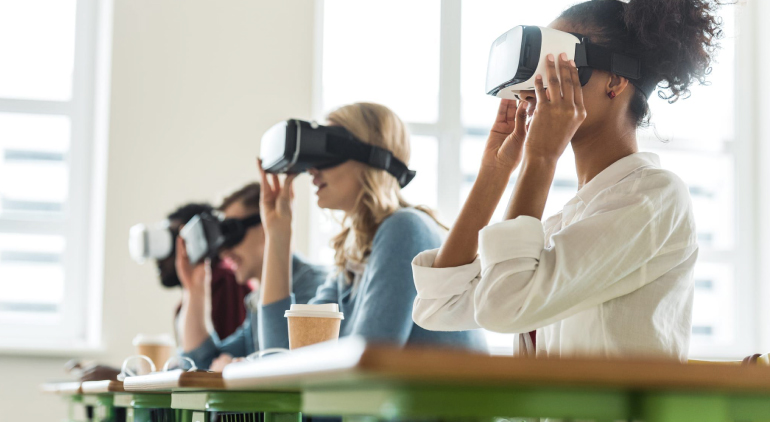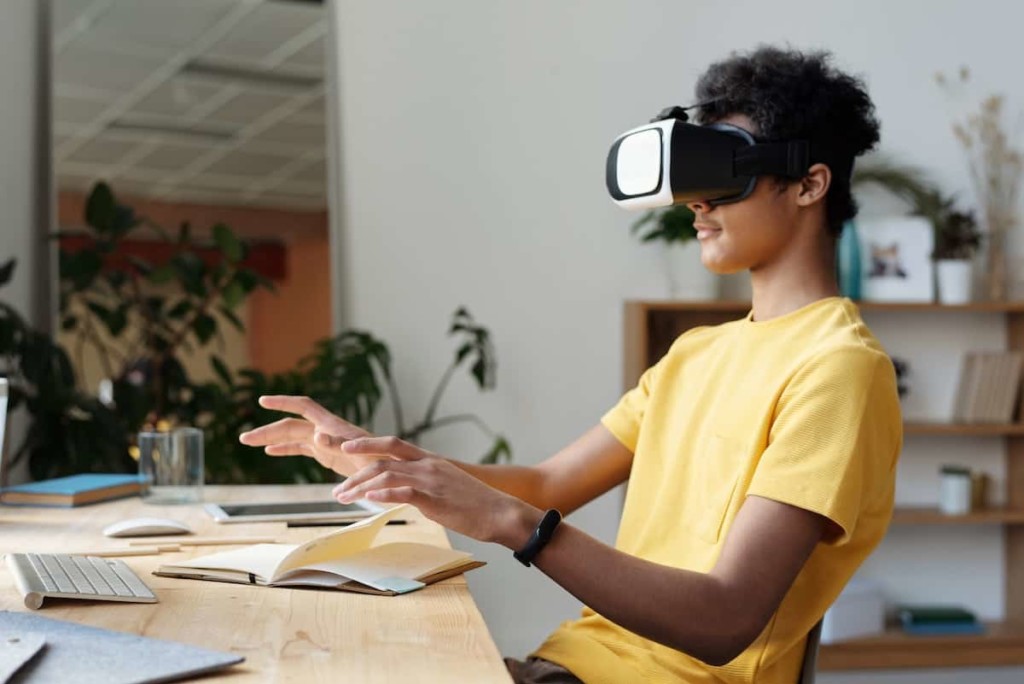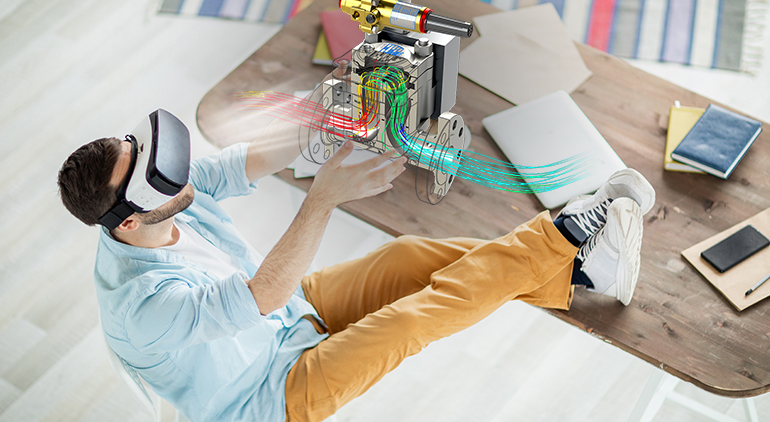How to Use Virtual Reality in Education for Better and Faster Learning

VR has begun to flourish and enhance a multitude of industries and amongst the many, education is one of the most impacted sectors. What we can take away from Goddard’s views is that VR can mold itself into anything that the human mind can possibly think of.
The benefits of VR have been seen in retail, in medicine, in entertainment, and slowly but surely, in some prominent areas of education.
However, what can also be interpreted from what Goddard says is that this is still only the preliminary phases of VR. The capabilities of VR are beyond our imagination.
VR in education is a step that is obvious yet under scrutiny. The introduction of VR and its unique modes of gamification introduces a novel form of an engaging platform for younger children.
VR in higher education involves less gamification and more practical experiences. Biology labs may never train dissecting a frog with real frogs, again with VR as an alternative.
It all comes down to how VR can be used efficiently for better and faster learning. While some of the following VR implementations enlisted, have already been employed, some are in an ideology phase that are yet to be seen.
1. The Immersive Experience

VR is literally an immersive experience; in that it allows a viewer to immerse themselves into a new reality. This reality can be manipulated into diverse scenarios.
One of the greatest benefits of VR in education, is this very immersive experience.
Experiencing VR in daily lessons can not only help children learn concepts but also understand them much faster with the help of engagement.
Students will be able to visualise and interact with concepts leading to far better and faster understanding. Younger children can experience the process of photosynthesis by becoming a plant!
Another brilliant aspect of the immersive experience of VR entails the worldwide field trips! Trips that parents may deny for safety reasons may now be held in the classroom.
Students can learn about King Tutankhamun while sitting inside his pyramid to understand the mummification!
2. STEM Education

STEM education is benefitted widely by the implementation of VR education technology. STEM education, especially through VR in higher education, aids students to comprehend complicated scientific, technological, engineering, and mathematical concepts.
However, more than comprehension, VR becomes a platform wherein intangible knowledge can be implemented to innovate some tangible ideas through VR.
A science lab is no longer required for dissecting a frog apps like Ribbit-ing Discoveries and a transmission electron microscope is no longer the only way to view what nanoparticles look like with applications like Nanome.
Jeopardising human life to test engineering equipment like prototype jets and cars, can be substituted with VR test runs.
Similarly, test runs of heavy-duty industrial machines can be done through VR.
But VR can also break down these machines, jets and cars into their tiniest part allowing students to understand their detailed workings part for part.
3. Skill Enhancement and Gamification
Benefits of VR in education include being able to enhance various skills. A study was conducted by Daydream Labs which assessed whether skills were learned more efficiently when one interacted with visual stimulus (a YouTube video) or when one was to carry out a skill through VR.
It was seen that those who were in the VR scenario did significantly better in real life than those in the visual stimulus scenario.
Other intellectual skills like practising speeches in front of a large audience or preparing for debates, MUNs, or Round Squares can also be fluently conducted on a VR platform.
For younger children, education through VR can be employed through gamification.
VR can be a medium that invites young children and keeps them engaged thoroughly, while the process of gamification will teach them what they need to learn.
"Experience the next level of learning with virtual reality! Transform education for rapid progress and boundless possibilities."
4. You can be educated ANYWHERE!
Being able to attend class from anywhere on the face of the earth is perhaps one of the best uses of VR for Higher Education.
With online classes, students are often distracted but on a VR platform with self-made avatars, students can be anywhere and log in on time to attend classes. In a situation like the current lockdown, this could be especially useful!
An overarching benefit of VR in higher education is the attention-seeking nature of this computer technology.
VR may not be new but being able to interact with the tiniest of cells and jump to the biggest monuments of the world in a span of a couple of minutes is impeccable, and undoubtedly captivating.
This would imply that VR would automatically lead to students paying more attention and hence, retaining more content.
Furthermore, retaining concepts and being able to comprehend them faster, means that younger children of the future would learn far more complicated concepts than the children of their age do today.
Simply, VR increases the efficiency of students exponentially. And hence, employing VR as mentioned above would certainly allow for an education system that incorporates faster and better learning.




